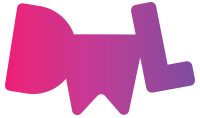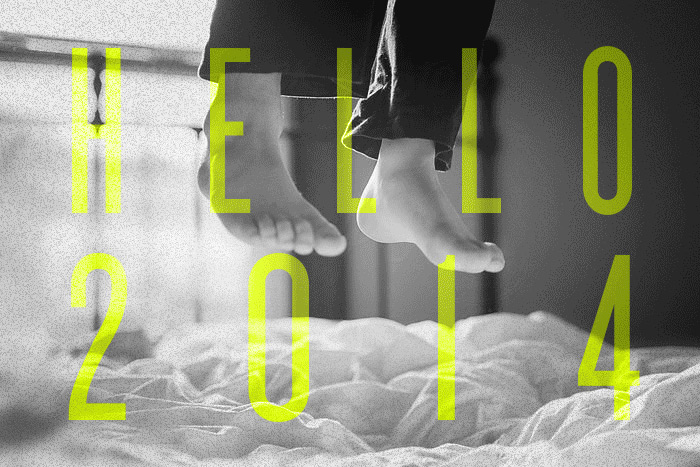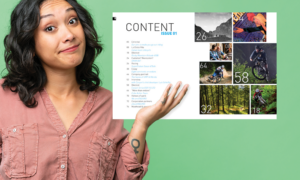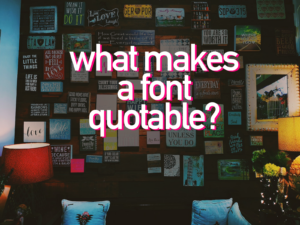Yep, we’ll be seeing even more flatness.
We are at the end of the beginning of flat design. Every design trend article has this one at the top of their list. After iOS 7 launched the design world started to flatten everything they could get their pixels on. Flat shapes and colors started appearing everywhere in 2013 but this is really just the start. The bigger design concept behind all this flatness is just simplicity. Finding ways to make your web or app design simpler means you can actually concentrate on getting users to try doing increasingly complex things. The challenge this trend imposes is that lots of websites, products, and services will be competing in a Thunderdome of flat color and simplicity ubiquity.
This is how we scroll.
People are still asking us about the fold of a website. Yes, it’s true that in 2014 I’m 100% confident that we’ll be building experiences that are scrolling in nature and still will be discussing the fold. The dead tree newspaper really is The Walking Dead of influence over design.
Pinterest, Tumblr, and Instagram are just a few of the continuous or infinite scrolling experiences that suck you into a total wormhole of non-productivity. That feeling of “I’ll just scroll down one more time” and then I’ll move on, then you see something amazing, so you do it again. Infinite scrolling is the crack cocaine of web design.
The end of navigation as we know it.
We’ve already started seeing the impact of responsive design on websites as websites are starting to lead with hamburger menu navigation on all screen sizes. The era of a website having traditional navigation is quickly ending. Users are now used to on demand menus, sticky navigation and fixed headers that follow you as you scroll. These new tools allow for cleaner, simpler web design.
Micro-Storytelling & The Snow Fall Effect.
The other big impact on design is the increasing presence of micro and long form storytelling that is changing the way we see stories. Micro-storytelling on Instagram, Pinterest, YouTube, Twitter, Vine, and pretty much any single-serving blog on Tumblr are only the beginning of this new wave of storytelling. All of these platforms work ever so slightly different for a distinctive slice of your audience. The lack of cookie cutter approach means we have to create more net-new content as a result.
Meanwhile, as stories get smaller, we also get to enjoy how news and online articles are simultaneously getting larger too. Who would have expected that? Take Twitter co-founder Evan Williams, who has launched Medium, where people share longer-form ideas for those who think well beyond just 140 characters.
The New York Times is one of the organizations pioneering the way with its long form digital journalism in pieces like Snow Fall and A Game of Shark and Minnow. These mixed media pieces stitch together video, photos, sound, interaction and stories into one neatly designed package to consume. For the generation that grew up digitally and would rather watch YouTube than ever read a 30,000-word New Yorker piece, this could be a game changer. It’s no wonder that according to Forbes, the top marketing job in 2014 will be Director of Content.
Everything just gets smarter.
And while we’re all working harder to push out stories in real time on a fractured media landscape, we can look forward to a world where our TVs talk to our fridges and then Amazon delivers new stuff to us via their drone army as soon as we’re out of eggs. Yes, eggs, you can have a product that monitors your eggs and tells you when they are expired, or when you are getting low. Wrong category, but you can still almost hear Homer J. Simpson proclaim, “Doughnuts, is there anything they can’t do?”
The future is actually so much more than smarter, it’s about a world of invisible buttons. Invisible is the next generation of flat. That is to say, buttons we don’t even know we’re pushing. As Neo in The Matrix once said, “Wow.” Pioneering this term and movement is Amber Case — who incidentally has the coolest job title ever, Cyborg Anthropologist. At Le Web she said, “Instead of having a bunch of sensors all over the place, when you got home the lights would turn on, because the device would know when it entered the GPS circle around the house. When it leaves that circle, it would automatically turn off.” In short, design is about to move off the screen and out into our environment space.
In a future world where everything is simpler, more flat, shorter and longer, infinite, and thankfully smarter, knowing that drones will deliver goods by air brings us one giant step towards living in The Hunger Games. For the designer, may the odds be ever in your favor.





